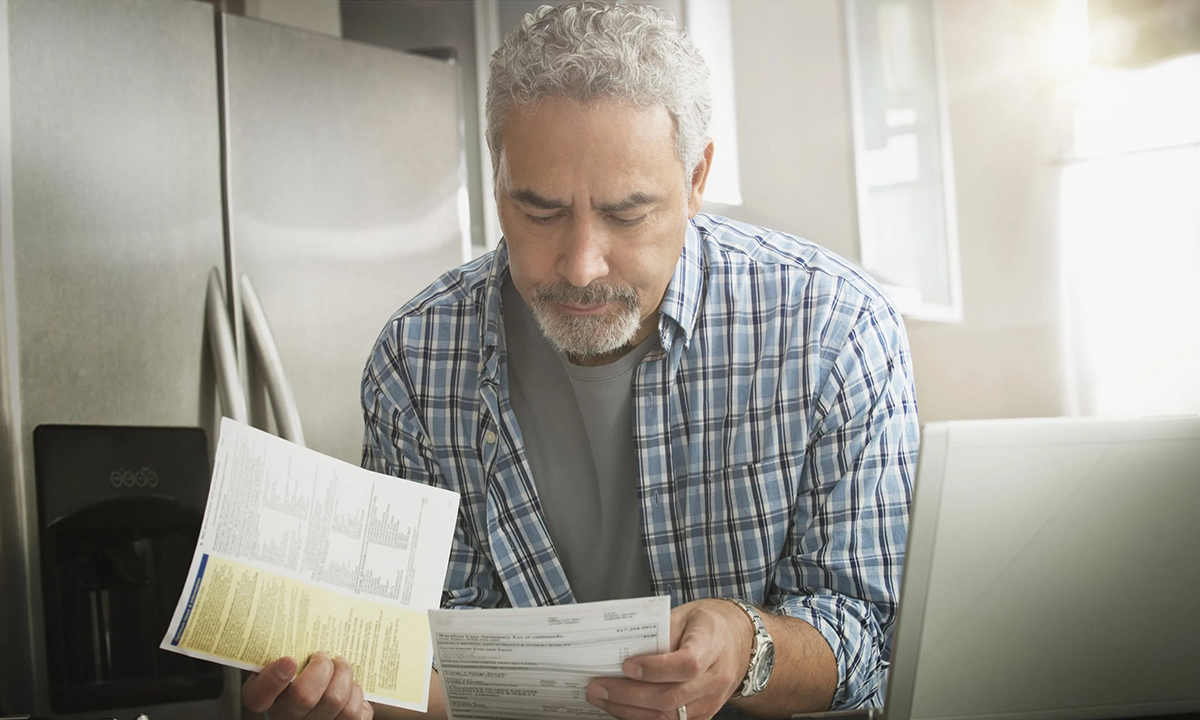
当新冠疫苗在去年推出后,许多美国人希望美国能够迎来类似20世纪“咆哮的二十年代”一般的经济复苏。然而,对许多美国人而言,他们的2020年代,不但无法让人想起20世纪20年代摩登女郎的生活,反而是在不断上涨的生活成本和可能出现的经济衰退之间苦苦挣扎。
创纪录的高通胀击中了大多数美国人的痛处:他们钱包里的钱愈发缩水。结果,拥有财务健康的人变少了,这是自金融健康网络(Financial Health Network)这家机构开始研究相关数据以来五年内首次下降。
正如《金融健康脉搏2022年美国趋势报告》(Financial Health Pulse 2022 U.S. Trends Report)中详述,金融健康网络分析了4月和5月的调查结果,对美国人的财务健康状况(包括个人财务状况、财务自由和安全感)做出了分析。只有三分之一的美国人被认为拥有财务健康,从2021年的34%下降到了今年的31%。
随着疫情初期政府援助项目的作用逐渐消逝,财务健康比例降低至接近2019年新冠疫情爆发前的水平,当时只有29%的家庭被认为拥有财务健康。
财务健康的一个重要指标是拥有稳定的收入和储蓄。但表示自己的支出超过了收入的受访者变多了——只有79%的受访者说自己的支出少于或等于收入(创历史新低,比去年减少了6%)。受访者还指出,他们没有短期储蓄,对自己的长期财务状况也没有信心。
拥有财务健康的黑人数量今年达到了15%的新低,说明通货膨胀对黑人、拉丁裔和印第安裔家庭产生了不成比例的影响。但即便是高收入人群等通常享有特权和保障的群体,尽管大多数情况下他们不会受到经济波动的严重冲击,不过由于通货膨胀和股市暴跌,他们也经历了很长一段时间以来的第一次财务困难。
收入在6万美元以上的家庭财务健康状况的降幅最大:收入在6万美元至99,999美元之间的家庭,财务健康的比例从43%下降到36%,收入在10万美元以上的家庭从59%下降到54%。低收入家庭有类似感觉的人相对较少,相较于去年的降幅不算太高(2个百分点)。
通货膨胀导致中产阶级萎缩
高收入家庭对财务状况的感受出现了较大变化,证明了美国中产阶级正在萎缩。
根据皮尤研究中心(Pew Research Center)的一项分析,随着不平等加剧,可以划分为中产阶级的成年人比例从1971年的61%减少到2021年的50%。美元已经不像以前那么值钱了,如果现在两口之家的收入能够达到127,293美元,就还会被认为是中产阶级。低收入家庭受到通货膨胀的冲击最为严重,但美国大多数中等收入家庭也表示,他们的收入已经跟不上当前的生活成本。
尽管美国人在新冠疫情期间存了笔钱,但当他们动用疫情期间的储蓄时,并不是每个人都觉得自己存了钱。布鲁金斯学会(Brookings Institute)今年春天的一份报告发现,大多数家庭和2019年相比都挣的更多,存的也更多。但他们在从汽油、住房到食物等方方面面的花销也更多了。
布鲁金斯学会的高级研究员温迪·埃德尔伯格向《财富》杂志表示,这些家庭“发现财务缓冲资金在减少”。“看着自己的支票账户缩水,你会感到压力。看到物价以几十年来从未见过的方式上涨,你也会感到压力。”
虽然通胀目前看起来已经开始降温,但如果通胀率继续保持在如此高的水平,许多家庭赖以维持生计的储蓄池就将开始枯竭。尽管美国人可能非常渴望重回“咆哮的二十年代”,但当维持生计成为头等大事时,人们恐怕很难忘却自己的烦恼。(财富中文网)
译者:Agatha
当新冠疫苗在去年推出后,许多美国人希望美国能够迎来类似20世纪“咆哮的二十年代”一般的经济复苏。然而,对许多美国人而言,他们的2020年代,不但无法让人想起20世纪20年代摩登女郎的生活,反而是在不断上涨的生活成本和可能出现的经济衰退之间苦苦挣扎。
创纪录的高通胀击中了大多数美国人的痛处:他们钱包里的钱愈发缩水。结果,拥有财务健康的人变少了,这是自金融健康网络(Financial Health Network)这家机构开始研究相关数据以来五年内首次下降。
正如《金融健康脉搏2022年美国趋势报告》(Financial Health Pulse 2022 U.S. Trends Report)中详述,金融健康网络分析了4月和5月的调查结果,对美国人的财务健康状况(包括个人财务状况、财务自由和安全感)做出了分析。只有三分之一的美国人被认为拥有财务健康,从2021年的34%下降到了今年的31%。
随着疫情初期政府援助项目的作用逐渐消逝,财务健康比例降低至接近2019年新冠疫情爆发前的水平,当时只有29%的家庭被认为拥有财务健康。
财务健康的一个重要指标是拥有稳定的收入和储蓄。但表示自己的支出超过了收入的受访者变多了——只有79%的受访者说自己的支出少于或等于收入(创历史新低,比去年减少了6%)。受访者还指出,他们没有短期储蓄,对自己的长期财务状况也没有信心。
拥有财务健康的黑人数量今年达到了15%的新低,说明通货膨胀对黑人、拉丁裔和印第安裔家庭产生了不成比例的影响。但即便是高收入人群等通常享有特权和保障的群体,尽管大多数情况下他们不会受到经济波动的严重冲击,不过由于通货膨胀和股市暴跌,他们也经历了很长一段时间以来的第一次财务困难。
收入在6万美元以上的家庭财务健康状况的降幅最大:收入在6万美元至99,999美元之间的家庭,财务健康的比例从43%下降到36%,收入在10万美元以上的家庭从59%下降到54%。低收入家庭有类似感觉的人相对较少,相较于去年的降幅不算太高(2个百分点)。
通货膨胀导致中产阶级萎缩
高收入家庭对财务状况的感受出现了较大变化,证明了美国中产阶级正在萎缩。
根据皮尤研究中心(Pew Research Center)的一项分析,随着不平等加剧,可以划分为中产阶级的成年人比例从1971年的61%减少到2021年的50%。美元已经不像以前那么值钱了,如果现在两口之家的收入能够达到127,293美元,就还会被认为是中产阶级。低收入家庭受到通货膨胀的冲击最为严重,但美国大多数中等收入家庭也表示,他们的收入已经跟不上当前的生活成本。
尽管美国人在新冠疫情期间存了笔钱,但当他们动用疫情期间的储蓄时,并不是每个人都觉得自己存了钱。布鲁金斯学会(Brookings Institute)今年春天的一份报告发现,大多数家庭和2019年相比都挣的更多,存的也更多。但他们在从汽油、住房到食物等方方面面的花销也更多了。
布鲁金斯学会的高级研究员温迪·埃德尔伯格向《财富》杂志表示,这些家庭“发现财务缓冲资金在减少”。“看着自己的支票账户缩水,你会感到压力。看到物价以几十年来从未见过的方式上涨,你也会感到压力。”
虽然通胀目前看起来已经开始降温,但如果通胀率继续保持在如此高的水平,许多家庭赖以维持生计的储蓄池就将开始枯竭。尽管美国人可能非常渴望重回“咆哮的二十年代”,但当维持生计成为头等大事时,人们恐怕很难忘却自己的烦恼。(财富中文网)
译者:Agatha
Many Americans hoped the U.S. would enter a revival similar to the 20th century’s Roaring ’20s once vaccines rolled out last year. But instead of channeling flappers, many Americans have spent their 2020s juggling a rising cost of living and awaiting a possible recession.
Record-high inflation has hit most Americans where it hurts: their wallets. As a result, the number of people considered financially healthy has declined for the first time in five years—since the Financial Health Network first started researching such data.
As detailed in the Financial Health Pulse 2022 U.S. Trends Report, Financial Health analyzed surveys from April and May to gauge Americans’ financial health (the state of one’s personal finances and their feelings of financial freedom and security). Only a third of Americans were considered financially healthy, dropping from 34% in 2021 to 31% this year.
The drop comes as early pandemic government assistance programs waned, nearing 2019 pre-pandemic levels when only 29% of households were considered financially healthy.
A good indicator of strong financial health is having a steady income and savings. But more people reported that they were outspending their earnings—only 79% of respondents said they were spending less or equal to their income (a record low that is 6% less than it was last year). Respondents also said they weren’t building short-term savings and didn’t feel confident in their long-term finances.
The number of Black people considered to be financially healthy reached a new low of 15% this year, underlying how inflation has disproportionately affected Black, Latinx, and Native American households. But even typically privileged or secure groups like high earners, who aren’t usually as devastated by economic volatility, experienced financial hardship for the first time in a while thanks to inflation and a plunging stock market.
Households earning over $60,000 saw the greatest declines in financial health: from 43% to 36% for those earning between $60,000 and $99,999 and from 59% to 54% for those earning over $100,000. Lower-income households saw fewer people feeling this way with less of a drastic drop from last year (2 percentage points).
Inflation is even pinching the middle class
That higher-income households are feeling a bigger difference in their financial health is evidence of America’s shrinking middle class.
As inequity grows, the number of adults who live in middle-class households shrunk from 61% in 1971 to 50% in 2021, according to an analysis from Pew Research Center. The dollar doesn’t stretch as far as it once did—two-person households these days can still earn up to $127,293 and be considered middle-class. Low-income families are hit hardest by inflation, but the majority of middle-income households in the U.S. say their income is outpaced by the current cost of living.
Even though Americans saved a boatload during the pandemic, not everyone feels that way when they’ve been dipping into their pandemic savings. A Brookings Institute report from this past spring found that most households are doing better than they were in 2019, saving more and earning more. But they’re also shelling out more for everything from gas and housing to food.
These households are “seeing that financial buffer decrease,” Wendy Edelberg, a senior fellow at Brookings, told Fortune. “If you’re watching your checking account dwindle, that’s stressful. If you’re watching prices go up in ways that we really haven’t seen in decades, that’s stressful.”
While it looks like inflation has started to cool down, if it continues to remain at its aggressive rates, the extra savings that are keeping many households afloat will begin to dry out. As much as Americans might pine for a roaring ’20s, it’s hard to forget your troubles when affording life is top of mind.






